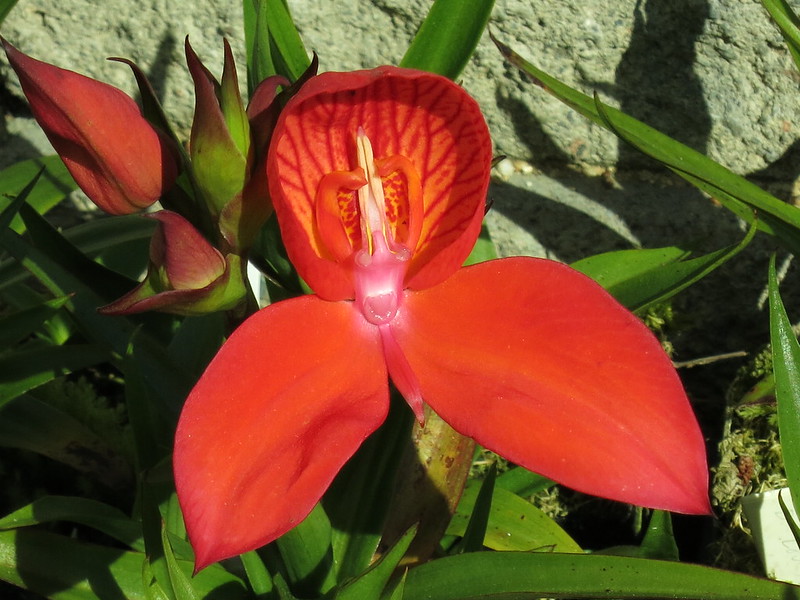Quote:
Originally Posted by meizzwang

...every last Darlingtonia died during a heat wave a few years ago, whereas some of the disas survived. This leads me to believe that Disas are more cultivation friendly relatively speaking.
|
From personal experience,
Disa uniflora are tolerant of heat up to 85 F to 90 F. Beyond this range of heat, it can be problematic for them. Due to the reason they come from South Africa, (which is generally considered an area that would be classified as either a savannah or a semi-arid desert such as places like Southern California), heat IS commonplace, and therefore, a species such as
Disa uniflora has a fair degree of heat tolerance.
The caveat would be that because they are quite prevalent in the Table Mountain area of Cape Town, South Africa, (at least the red varieties are), and due to the high elevation of the region, as well as its close proximity to the coastline, the amount of heat a species such as
Disa uniflora can tolerate is limited by degree as well as by duration, but it is difficult to specify details on this matter at the moment unless I keep meticulous records.
With that said, I have not noticed whether the temperatures here have risen up to 116 F before, but it is not impossible. I also have not taken notice nor have kept track of how long temperatures here stay above 100 F. I have noticed that most of the times, it does approach 90 F to 100 F here, with some days reaching temperatures over 100 F. I cannot say with any certainty or confidence as to whether or not a species such as
Disa uniflora would be able to tolerate temperatures in excess of 100 F over a long duration of time, although it is a good bet to say that they will suffer. So this is definitely consistent and in line with what the original poster had mentioned about her own plants dying off in large numbers during a heatwave where she lives.
Do understand that although I live in the Los Angeles County area, I do not live near the coast. So, when I'm speaking about growing Disas, I am talking from the experience of having to grow them approximately 27 to 28 miles inland from the coast. I do not have the benefit of coastal breezes to cool things down or to curb the heat during the summer.
Aside from that, if anyone is interested in knowing for the purposes of further context, Table Mountain itself is reported to be 3,558 ft tall.
Other plants that are in this area are species such as:
Crassula coccinea - (a succulent)
Fire Heath (
Erica cerinthoides)
Yellow Rice Heath (
Erica lutea)
Coat-hanger Heath (
Erica plukenetii)
King Protea (
Protea cynaroides)
Saltera sarcocolla - (a succulent leafed shrub belonging to the family Penaeaceae)
Tritoniopsis triticea - (a flower that is in the Iris family)
As a side note, I may have seen either
Tritoniopsis caffra or
Tritoniopsis triticea offered for sale as a bulb from time-to-time in various nurseries in the Los Angeles County areas.
According to Encyclopedia Brittanica, the summit of Table Mountain experiences around 60 inches of rain a year, while the base of Table Mountain experiences around 22 inches of rain a year.


































 Linear Mode
Linear Mode


